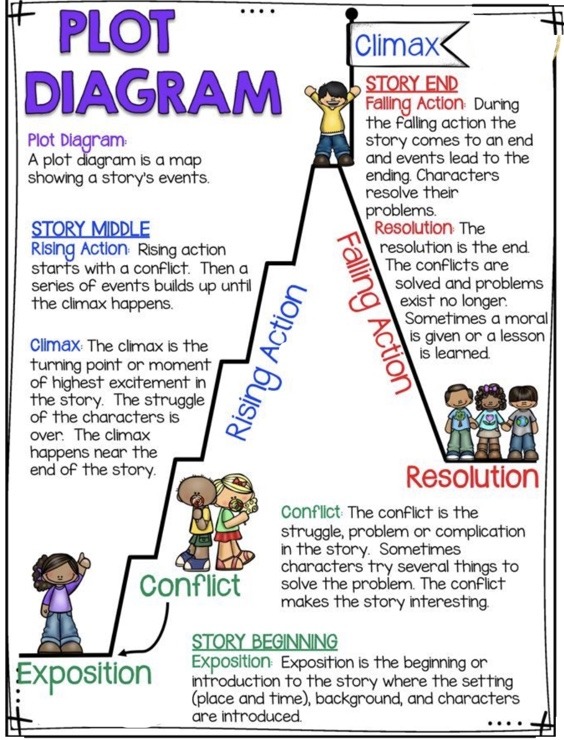
Plot & Charcterization
Assessment
•
Deleted User
•
English
•
8th Grade
•
7 plays
•
Medium
Improve your activity
Higher order questions
Match
•
Reorder
•
Categorization
.svg)
actions
Add similar questions
Add answer explanations
Translate quiz
Tag questions with standards
More options
25 questions
Show answers
1.
Multiple Choice
Every story has some kind of conflict—without it, you have no plot! The conflict is a struggle or problem that characters must face.
The conflict usually introduced in what part of the story?
Falling Action
Climax
Inciting Incident
Resolution
2.
Multiple Choice
Read the following passage from a story. Identify which statement best describes the conflict of this passage.
Shivani pulled the last of the weeds from the garden bed and stood, putting her hand to her back. She was not done weeding, but she could see, at the very far edge of the sky, the fist of an angry storm cloud forming. She had a few more rows to work, but she wasn’t sure if she would get to them before the rain began. Last week, there’d been a rainstorm, but it had been quiet and gentle, a welcome shower that encouraged the tomato plants and the eggplant blossoms to open. Maybe, her plants wouldn't survive.
Which statement best describes the conflict of this passage?
A gardener is working in her garden.
Spring rain makes crops grow.
A storm cloud is forming in the sky.
A coming storm could destroy a gardener’s vegetables.
3.
Multiple Choice
What is the climax of a story?
The turning point of the story
The struggle between two characters
The beginning of the story
The point when the conflict is resolved
4.
Multiple Choice
Interest and suspense are built during which part of the story?
Introduction
Rising action
Climax
Falling action
5.
Multiple Choice
Choose the two words that best complete the sentence.
During the exposition, it is important to introduce the ________ and the ________.
characters, setting
characters, falling action
climax, conflict
conflict, resolution
6.
Multiple Choice
Which list shows the plot elements in the correct order?
inciting incident, falling action, exposition, climax, rising action, conclusion
falling action, rising action, inciting incident, climax, resolution, exposition
exposition, rising action, inciting incident, climax, falling action, resolution
exposition, inciting incident, rising action, climax, falling action, resolution

Explore this activity with a free account
Find a similar activity
Create activity tailored to your needs using
.svg)

Story Elements
•
2nd Grade

Kamishibai Man Comprehension
•
3rd Grade

All Summer In A Day
•
6th Grade

Plot Elements
•
6th - 8th Grade

Elements of Plot Refresher
•
6th Grade

Theme
•
8th - 9th Grade

Plot Elements
•
4th - 6th Grade